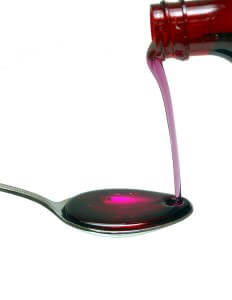 I feel for Market Research Managers in charge of Brand Awareness trackers.
I feel for Market Research Managers in charge of Brand Awareness trackers.
It’s not as easy as it used to be. As the number of means by which brand awareness and familiarity are influenced increases, our ability to measure their impact becomes more difficult. Sure, you can still efficiently measure absolute awareness levels, but how useful is that if you don’t know what is driving them?
In the old days, it was easy, especially in consumer markets (versus B2B). Once upon a time, consumers generally became aware of and purchased products the same ways. Brand awareness came largely from in-store displays, TV and print advertising.
Purchasing via traditional retail. Yeah there were some variations…radio advertising was more effective with some groups than others, and in some markets catalogs were king. But still, compared to the present, pretty simple.
Today, the means of brand exposure and familiarization are amazingly diverse and increasingly out of the brand’s control. Both consumer and B2B marketers have complexities in this regard.
Here is an example from a client I work with in the B2B space—and this is just one client’s situation! We identified their known brand awareness sources as follows:
1. Banner ads
2. Billboards (yes, actual billboards)
3. Expert blogs (not brand-sponsored)
4. Company website
5. Company-sponsored ezine
6. Direct Mail
7. Direct sales force
8. Direct-to-consumer news releases
9. Employee twitters (sanctioned)
10. Online and traditional retail channels (several)
11. PR campaigns
12. Print catalog
13. Product review sites
14. Trade magazine print ads
15. Trade magazine sites (mentions in articles)
16. Trade shows
17. Word of Mouth
Sure, this client has some pretty sound hypotheses about which of these are more or less influential. But ideally they would be able to precisely answer the question: What’s the most efficient combination of brand building activities for maximizing awareness among desirable customer groups?
Brand Awareness Research Options: Let’s Keep an Open Mind
So what’s a beleaguered Market Research Manager to do? What are the options?
1. Conduct a traditional quantitative study.
That’s the best way to get the most data for really comprehensive analysis. But it may not work if…you don’t have access to great lists of qualified respondents….you have a hard-to-reach target market…your budget doesn’t permit it…you’re in a fast-moving market where the results can change just as the analysis is being done…your internal clients will balk if you can’t reliably quantify each source of brand awareness.
2. Run experiments. A great option but takes time. And again, if you are in a rapidly changing market, results may be too slow.
3. Focus on competitive benchmarking. If you have 2 or more pretty direct competitors, one option is to design your research on a smaller scale and focus on competitive comparisons. You likely have Competitive Intelligence on your top competitors’ brand-building tactics (if not, you should!). So you can conduct some pretty straightforward research to deduce what works. “Brand C’s brand awareness is up 30% since last quarter and their only new efforts are around driving traffic to their website and a highly-focused print ad campaign!” (OK, that example is overly simplistic, but you get the point).
4. Conduct qualitative research with newly acquired customers. I can see the quant researchers rolling their eyes, but this is an option that helps capture the complexities of influence while being very affordable compared to a quant effort. Can people reliably self-report how they became aware or increasingly aware of a brand? Nope, and this is a challenge in quant as well. But they can share stories about specific brand-related exposures that can be very rich.
For example, I once conducted a small set of such interviews for a client, and we heard a fascinating theme about new customers gaining brand awareness through one sales person’s rather unconventional methods. Very actionable stuff!
In any of these cases, we just have to remember that people cannot accurately self-report how they became aware of, or familiar with, a brand. They can report what they do recall, but that is likely to be incomplete (they may remember a flashy TV ad, and simply not recall a series of banner ads). Some methods deal with this challenge better than others, and a market research agency with a track record in Brand Awareness will be able to advise you based on your market’s particular nuances.
Making A Plan
Hopefully the examples above illustrate that there are several ways of researching brand awareness drivers given different budget and time-line parameters. But the reality is, for many companies, no perfect solution exists that can absolutely quantify brand awareness drivers. The variables are just too complex, and changing too rapidly.
Still, even for Research Managers in complex markets, research can get us in the neighborhood, even if it won’t be perfect. For example, in working with a client in this situation, we were unable to create an absolute, quantified rank order of brand awareness drivers. But we were able to identify 4 tiers of drivers: A “Top” tier (the top 4 drivers), a “Strong” tier (the next 3), a “Low” tier (the next 4) and a “Wildcard” tier (items that appeared to be low but were difficult to measure). Ideal? No. Actionable? Yes.
Perhaps the greatest challenge for Market Research Managers with Brand Awareness projects is simply managing executive expectations. Brand awareness measurement is a complex and moving target. And non-researchers often have unrealistic assumptions about how precise we can be—perhaps based on their previous experiences during simpler times. We need to re-set expectations with these folks, and inform them about more realistic outcomes. Heck, send them this article if it helps!
Any questions or comments? Please post them here or email me at KKorostoff@ResearchRockstar.com. Thanks!
[Thanks to Robin Brown at Environics Research Group for his feedback!]









